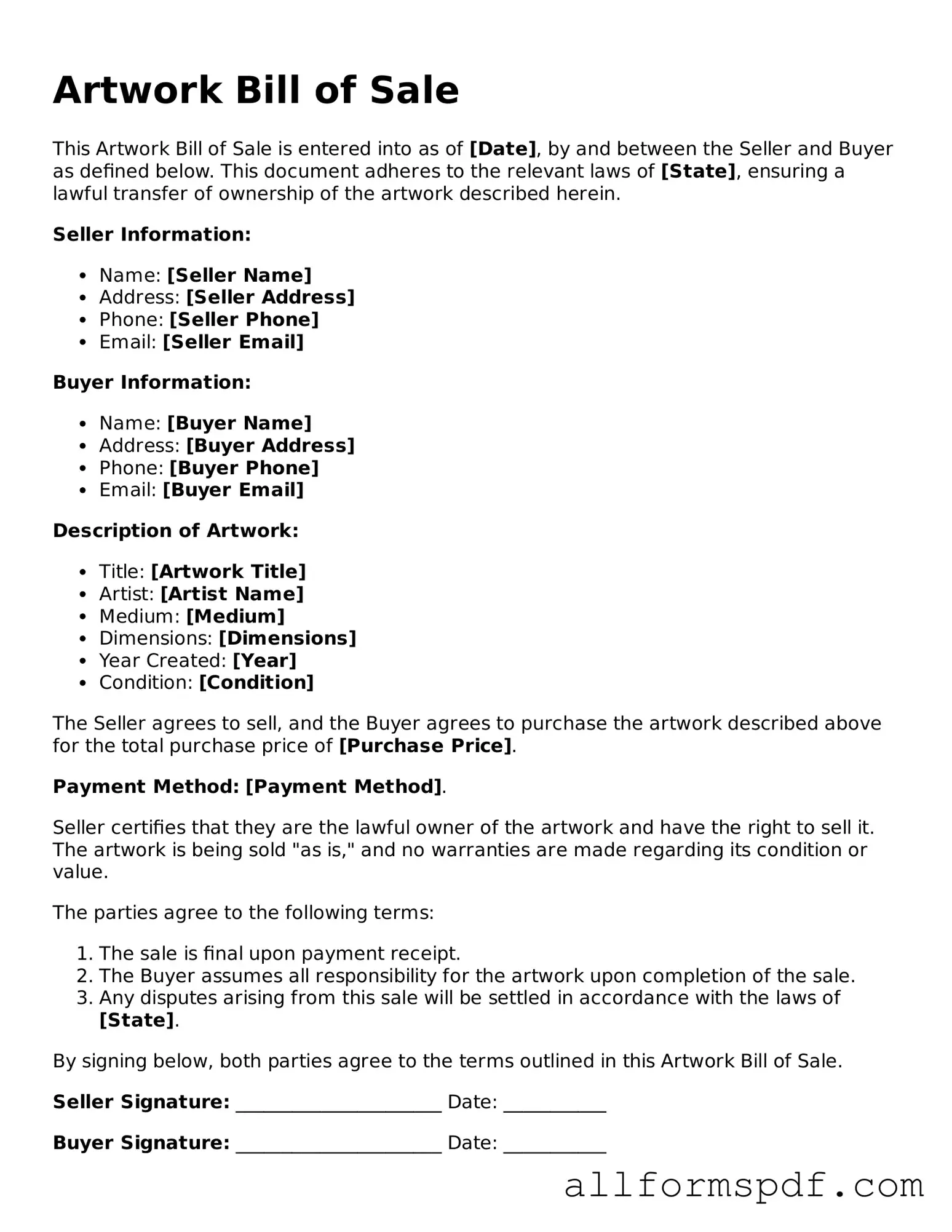When completing an Artwork Bill of Sale, many individuals inadvertently make mistakes that can lead to complications down the line. One common error is failing to provide accurate descriptions of the artwork. This includes not only the title and artist but also the medium, dimensions, and any other distinguishing features. Without these details, it becomes challenging to establish the authenticity and value of the piece.
Another mistake is neglecting to include the sale price. This might seem obvious, but leaving this section blank can create confusion and disputes later. Both the buyer and seller need to have a clear understanding of the transaction's terms, including how much was paid for the artwork.
People often forget to date the bill of sale. A date is crucial as it marks the official transfer of ownership. Without it, there may be questions about when the sale occurred, which can be particularly important for tax purposes or if any legal issues arise in the future.
Additionally, many individuals overlook the importance of signatures. Both the buyer and seller should sign the document to validate the transaction. A lack of signatures can render the bill of sale ineffective, leaving the ownership of the artwork in question.
Another frequent mistake is not keeping copies of the completed bill of sale. After the transaction, both parties should retain a copy for their records. This can be vital if any disputes arise or if proof of ownership is needed later on.
Some people fail to include any terms or conditions related to the sale. For instance, if there are specific agreements regarding the artwork's condition or future resale, these should be documented. Clarity in these terms can help avoid misunderstandings between the parties involved.
Inaccurate contact information is another common oversight. Providing correct names, addresses, and phone numbers ensures that both parties can communicate effectively if necessary. This simple detail can save a lot of hassle in the future.
Another mistake involves not verifying the identity of the buyer or seller. It’s wise to ensure that the person you are dealing with is who they claim to be. This can prevent fraudulent transactions and protect both parties’ interests.
People sometimes forget to check local laws regarding the sale of artwork. Different states may have specific requirements for bills of sale, especially for high-value items. Being aware of these regulations can help ensure compliance and protect against potential legal issues.
Finally, many individuals rush through the process, leading to careless mistakes. Taking the time to carefully fill out each section of the Artwork Bill of Sale can prevent future complications and ensure a smooth transaction for both the buyer and the seller.
